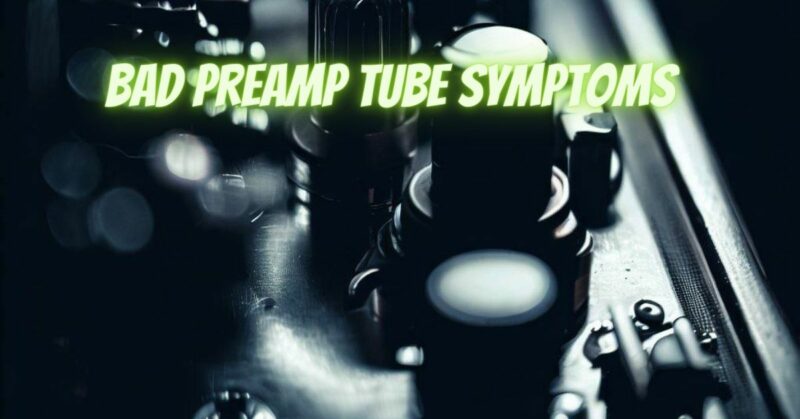Preamp tubes play a crucial role in shaping the tone and overall sound quality of your tube amp. When a preamp tube starts to malfunction or deteriorate, it can have a significant impact on the performance of your amp. In this article, we will explore some common symptoms of a bad preamp tube and provide insights into identifying and addressing these issues to ensure optimal performance from your tube amp.
- Excessive Noise:
One of the primary indicators of a bad preamp tube is the presence of excessive noise. This can manifest as hissing, crackling, or popping sounds when you’re playing through your amp. If you notice a significant increase in noise, especially when the volume is set to a low level or when the amp is idle, it may be a sign that a preamp tube needs to be replaced.
- Loss of Gain or Signal Weakness:
A faulty preamp tube can result in a noticeable loss of gain or a decrease in signal strength. You might find that your amp’s overall volume output has diminished, requiring you to turn the volume knob higher than usual to achieve the desired level of sound. If your amp sounds weaker or lacks the usual punch and clarity, a bad preamp tube could be to blame.
- Tone Changes or Distortion:
Preamp tubes contribute significantly to the tonal characteristics of your amp. When a preamp tube goes bad, you may experience changes in the tone or the introduction of unwanted distortion. Your amp’s sound may become muddier, harsher, or overly bright. If your tone has suddenly become less desirable or distorted, it’s worth investigating the condition of your preamp tubes.
- Inconsistent Performance:
A failing preamp tube can lead to inconsistent performance. You may notice that your amp behaves erratically, with fluctuations in volume, tone, or overall sound quality. This inconsistency can make it challenging to achieve a predictable and reliable tone. If you find that your amp’s performance is inconsistent from one session to another, it may be time to check your preamp tubes.
- Intermittent or No Sound:
In some cases, a bad preamp tube can result in intermittent or no sound at all. You may experience complete silence or sudden dropouts while playing through your amp. If you’ve ruled out other potential causes, such as faulty cables or speaker connections, a malfunctioning preamp tube could be the culprit.
Conclusion:
A bad preamp tube can significantly impact the performance of your tube amp, leading to excessive noise, loss of gain, changes in tone, inconsistent performance, or even complete signal loss. If you notice any of these symptoms, it’s essential to consider checking and potentially replacing your preamp tubes. However, it’s worth noting that troubleshooting tube-related issues requires caution, as tube amps operate with high voltages. If you are unsure or uncomfortable with tube amp maintenance, it is best to consult a qualified technician or amp specialist who can properly diagnose and address any problems with your preamp tubes. By maintaining the health of your preamp tubes, you can ensure optimal sound quality and preserve the tonal integrity of your tube amp.


